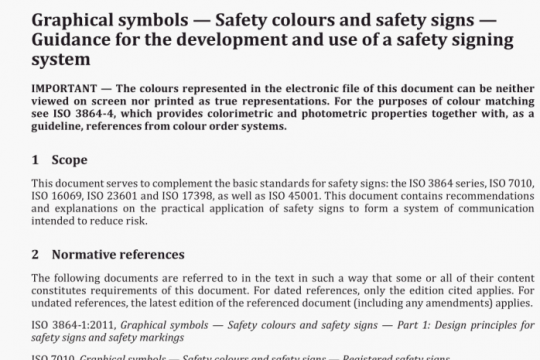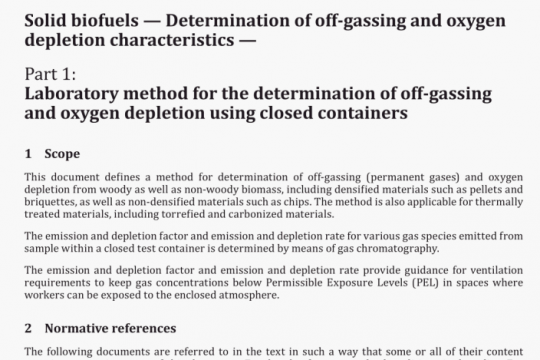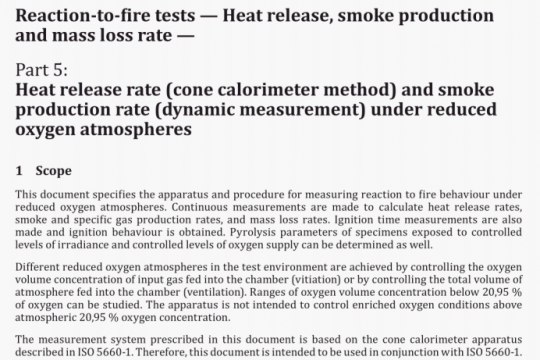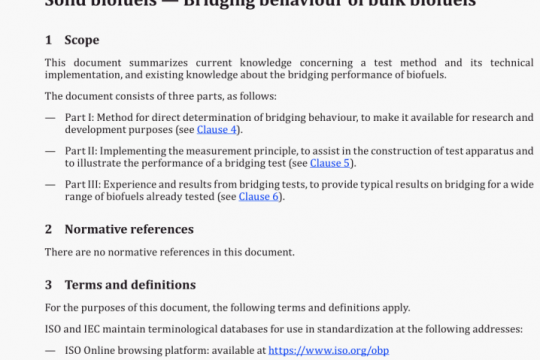ISO 23386 pdf free download
ISO 23386-2020 pdf free download.Building information modelling and other digital processes used in construction一Methodology to describe, author and maintain properties in interconnected data dictionaries.
lithe user is satisfied with the result, the user retrieves the attributes ofthe property.
If not, the user can modify the terms of the search or make a property creation, modification or deactivation request.
The property creation, modification or deactivation request form is based on the attributes and the request form management rules specified in Tables 1, 2 and 3.
A search addresses all the attributes that define a property.
5.2.2 Requests
5.2.2.1 General
The requests correspond to property creation, modification or deactivation actions. These requests are addressed to the experts in accordance with the table of correspondence (.5A). These requests shall follow the management rules from 5Jand shall be handled in the network ofdata dictionaries.
The requests can be as follows.
5.2.2.2 Creation
In the case of a creation request, the property is created immediately with its unique identifier. Its calculated status is “inactive”.
EXAMPLE Creation ofa property that has not been found in the data dictionary.
5.2,2.3 Modification – revision change
A validated modification revision change request corresponds to the updating ofone or more attributes ofthe property.
A modification revision change is a modification which changes not at all the semantic ofthe property.
It is up to the experts to decide if the modification revision change can be accepted or if it shall be a replacement action.
If the modification revision change is accepted by the experts, the attribute “revision number” of the property shall be changed.
EXAMPLE Typographical (typo) correction.
5.2.2.4 Deactivation
A deactivation request corresponds to a modification oithe property. After validating otthe deactivation request by the experts, the value of the calculated status of the property changes to “inactive”. The property is not deleted from the system (property archive).
EXAMPLE The user found a property which is no longer applicable and proposes to change its attribute “status” to “inactive”.
5.2.2.5 Replacement (a creation and a deactivation)
A replacement request corresponds to the creation ofthe property and the deactivation ofthe property it replaces. After validation of the replacement request by the experts, the replaced property is deactivated. Its calculated status changes to “inactive”. Its PAO12 attribute is automatically populated with the globally unique identifier of the property that replaces it.
EXAMPLE 1 The user found a property which is no longer applicable and has created a new one to replace it.
If someone proposes to link a new property to a group of properties, this group of properties shall have a new version number.
EXAMPLE 2 A user searches in the data dictionary for a group of properties “window”; he finds out that the property “height” is missing for this group of properties. This user proposes to link “height” to “window”. If this proposal is accepted by the experts, the group of properties will have a new version number.
If a user removes a link from an existing property to a group of properties, a new group of properties should be created, replacing the old one.
EXAMPLE 3 A user finds out that in the group of properties ‘window” the property “reaction to fire” will be replaced by a new one because of changes in a standard. He asks to remove the link from “reaction to fire” to “window”. A new group will be created, replacing the old one using the attributes PAO11 and PAO12 and the attribute “status” will be set to “inactive” for the old group. The new property will be linked to the new group of properties. The user will fill in the property attribute “deprecation explanation” of the old group.
5.2.2.6 Fragmentation, replacement of one property by several properties (several creations and one deactivation)
A fragmentation request corresponds to the deactivation of the property and the creation of several properties. After validation of the fragmentation request by the experts, the fragmented property is deactivated. Its calculated status changes to “inactive”. Its PAO12 attribute is automatically populated with the globally unique identifiers of the properties that replace it.
5.2.2.7 Merging, replacement of several properties by a single property (one creation and several deactivations)
A merge request corresponds to the creation of one property and the deactivation of several properties.
After validation of the merge request by the experts, the merged properties are deactivated.
The calculated status of the merged properties changes to “inactive”, PAO12 attributes are then
automatically populated with the globally unique identifier of the created property that replaces them.
EXAMPLE Merging of duplicate properties.
5.2.3 Management of duplicates
The procedure to remove duplicate properties shall be carried out on the relevant attributes. The management of duplicates cannot be fully automated.
5.3 Naming of reference documents
5.3.1 Standardization documents
Standardization documents shall be named following the ISO/IEC directives, Part 2 Principles and rules for the structure and drafting of ISO and IEC documents, 10.3.ISO 23386 pdf download.




